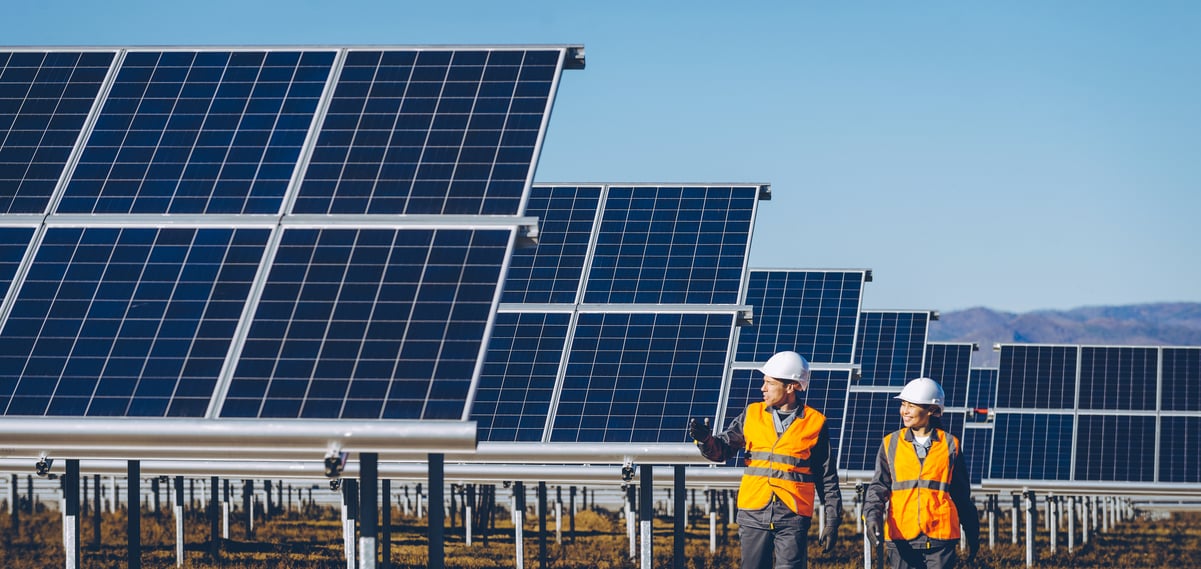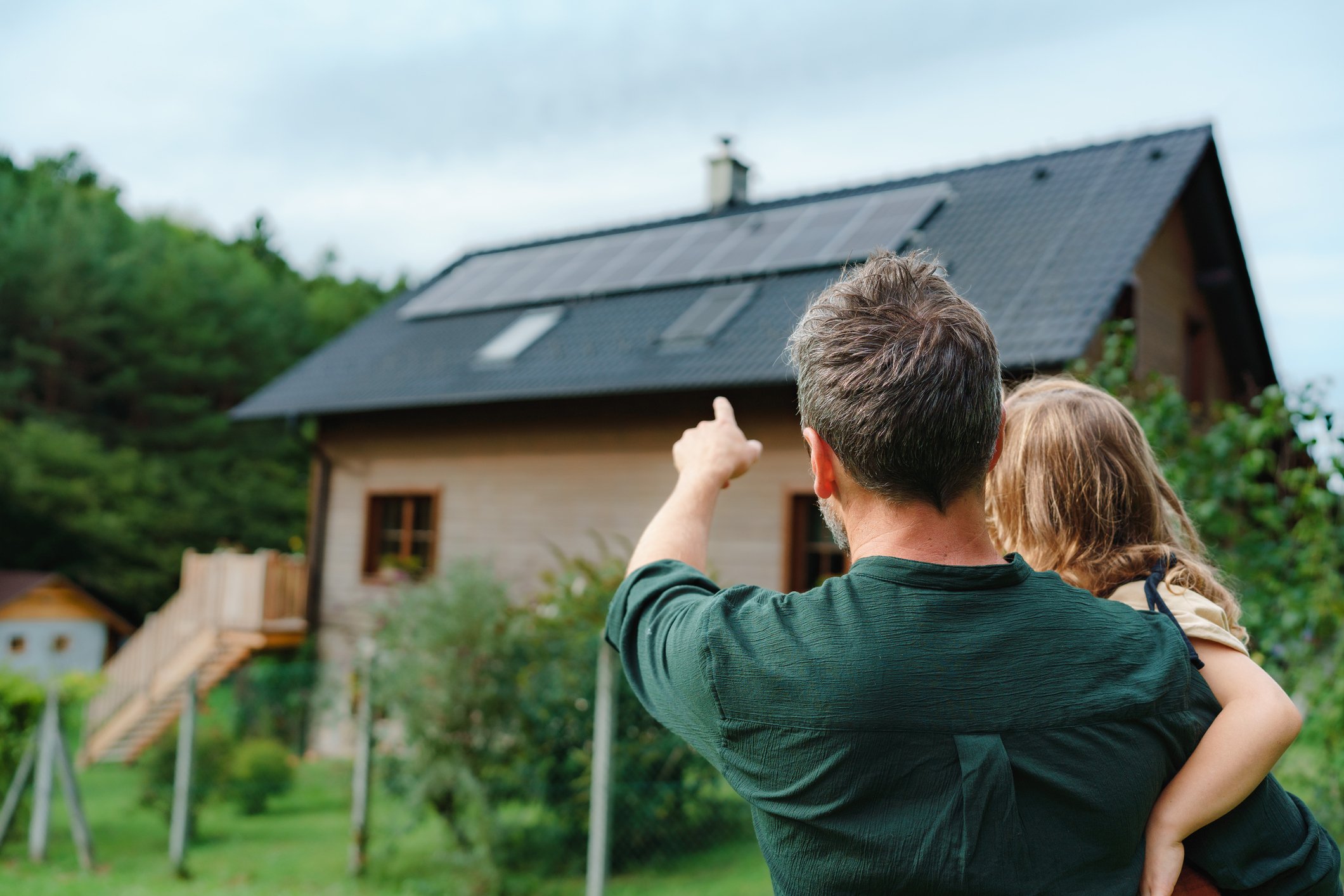One of the best ways to build wealth is to invest in companies that are built to win from major trends. One of the biggest trends in the world is the shift to renewable energy. Technological improvements keep making wind and solar cheaper, and the advent of low-cost energy storage has put renewables on a level playing field with hydrocarbons. Between the falling costs of renewables, and the megatrend that will see the global middle class add an energy-hungry 1 billion new members over the next decade, renewable energy stocks should be a part of every investors' portfolio.
Three renewable energy stocks that look buy-worthy today include Atlantica Sustainable Infrastructure (AY +0.00%), First Solar (FSLR +1.06%), and Vivint Solar (VSLR +0.00%). Here's why you might want to buy them now.

Image source: Getty Images.
Still a bargain (with a big tailwind for growth)
With shares up 23% year to date, Atlantica Sustainable Infrastructure might feel more like a renewable energy stock you missed out on, not one to buy right now. That's doubly the case when you look at the huge 46% gains (48% when adding in dividends) the stock has delivered since its March 23 bottom.
But it would be a big mistake to fixate on those recent gains and miss out on Atlantica's prospects to deliver steady, growing cash flow for many years to come. The company owns wind and solar power generation assets, power transmission lines, and water desalination systems -- booking steady, recurring cash flow that's highly insulated from recessions.
Atlantica owns assets in North America, Europe, and South America, and is positioned for many years of growth ahead. As an operator and developer of utility-scale systems on multiple continents, it's positioned to be a major player. But with a tiny asset base -- less than 1.5 gigawatts of capacity across 25 assets -- it's a very small player in the global market.
As a result, investors who buy shares now, while Atlantica is still a small fish, should see outsize profits as it grows much larger in the global renewables ocean. It has a dividend yield of 5.9% at recent prices, a solid portfolio of assets, and a tremendous pipeline for growth. So investors should focus not on the recent run-up in the stock price, but on the enormous growth potential Atlantica could deliver.
An innovator with a major advantage
First Solar is a leader in the utility-scale segment of the solar-panel industry. The company's thin-film technology is a competitive advantage against low-cost silicon panels; they operate more reliably in extreme weather, and with each iteration have proven superior in generating a predictable amount of power that's close to their rated output. For utility project developers and operators, this has real value; it's why First Solar is consistently one of the biggest sellers of panels for utility-scale projects, particularly in North America.
But its technology isn't the company's only advantage. First Solar carries more than $1 billion in net cash, and has consistently carried about $1 billion more cash than debt on its balance sheet for almost a decade. This cash buffer has done wonders to help it ride out the highly cyclical nature of utility-scale solar-panel demand. While the bigger trend is growth, demand can ebb and flow across quarters and even years, and having the cash to ride out the swings in demand enables First Solar to continue investing capital in research and development, and in manufacturing expansion.
As a result, the company is able to ride out market downturns while still strengthening its business, while competitors are often slashing expenses just to keep the lights on.
At recent prices, First Solar looks like a solid bargain. Shares are down about 16% this year, while the company is on track to have grown its capacity about 30% within the next couple of years. All that cash is paying off, and investors who buy at these levels should enjoy massive profits over the next decades.
Funding growth just got easier
Vivint Solar is a major installer of residential and commercial rooftop solar systems in the U.S. This is clearly a high-growth business, and Vivint is in an excellent position to leverage its scale as a large multistate installer as an equipment buyer, and to help drive down installation costs by standardizing the process. Moreover, the trend of falling solar equipment costs will continue to provide a tailwind for demand, as homeowners and business owners look to take advantage of solar to lower their energy bills.
And it's a great business: At the end of last quarter, Vivint said it held about $10 per share in net retained value -- future cash flow after expenses its deployed solar systems will generate. The catch? It's had to take on a lot of debt to finance those solar systems it deployed under lease and power purchase agreement contracts. And it will surely need to keep adding debt as it installs more solar systems:
VSLR Total Long Term Debt (Quarterly) data by YCharts.
At some point, it will reach an inflection point where the cash flow from solar installations generates enough cash flow that it can start using less leverage. But for now, debt will pay for a lot of deployments.
And this is where the COVID-19 pandemic could actually have some positive implications for companies like Vivint: Interest rates are now cheap, and look likely to remain historically low for years to come. That both lowers Vivint's cost of capital, and potentially increases the value of its future cash flow and tax assets, should it choose to monetize them.
Either way you look at it, lower borrowing costs could prove a massive financial boon for Vivint, on top of the distributed-solar megatrend that's already set to make it a big winner over the next decade or two.








